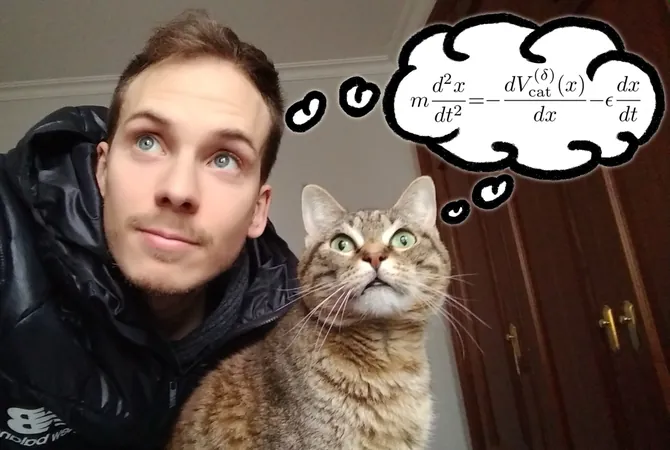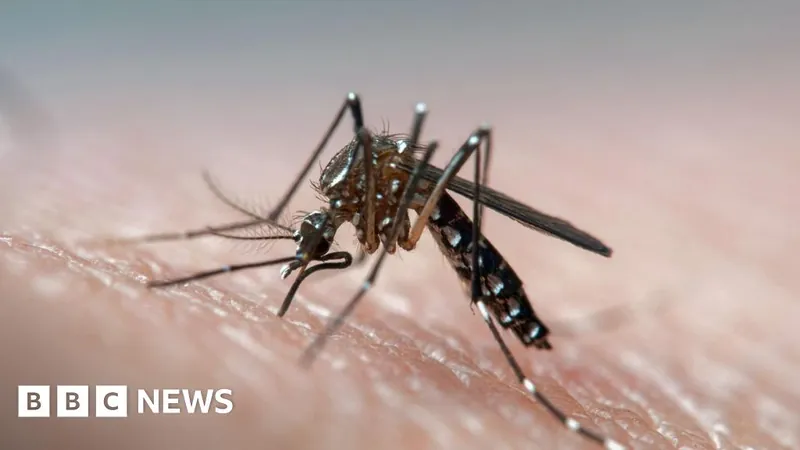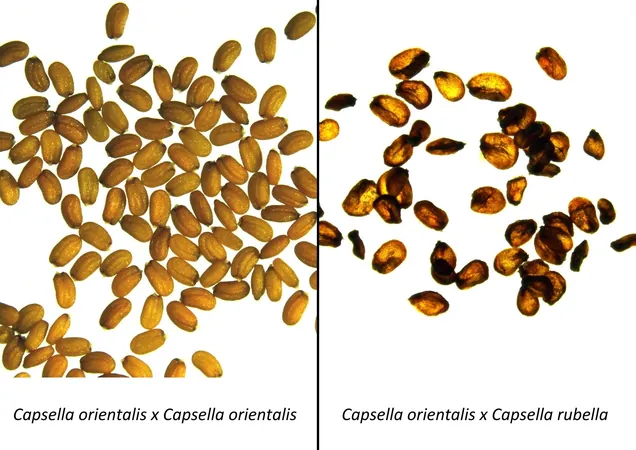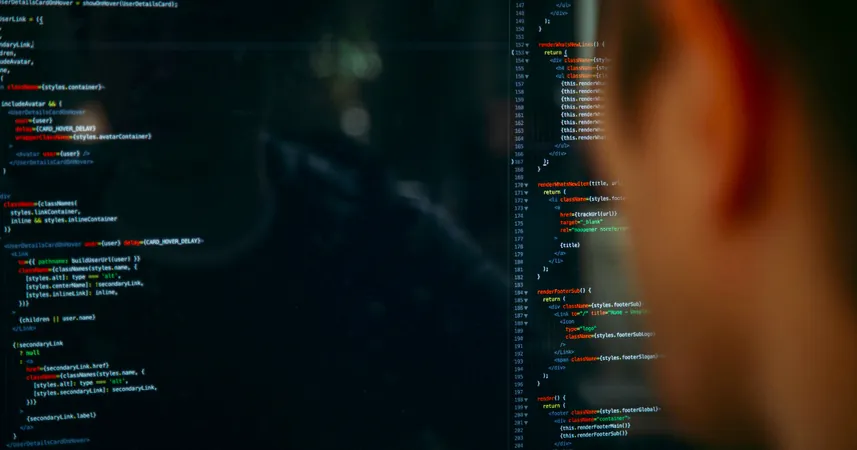
Unlocking the Secrets of Cat Motion: A Playful Equation Unveiled by a Physicist and His Feline Companion
2024-11-04
Author: Emma
In a world dominated by social media, it’s no secret that cats have claimed their throne atop the animal hierarchy, captivating millions across screens worldwide. This fascination is not just playful; it also intertwines with science. A new study published in the American Journal of Physics has taken this to a new level, courtesy of Anxo Biasi, a researcher at the Instituto Galego de Física de Altas Enerxías (IGFAE), who was inspired by his cat, Eme.
Schrödinger's famous thought experiment may have earned cats a spot in the annals of quantum physics, but Biasi's latest work aims to provide a glimpse into the classical mechanics of our furry friends. His goal? To connect physics with everyday experiences by presenting a whimsical equation that reflects cat motion in relation to human interaction.
From Mischief to Mechanics: A New Approach to Physics
Anxo Biasi, recently enrolled in the IGFAE through the prestigious Junior Leader program of La Caixa, has combined his love for science and his companion cat to develop an innovative approach to teaching physics. By framing complex physical concepts within the context of a cat's behavior, he’s making the subject more accessible—even fun!
What started as a light-hearted idea for April Fool's Day transformed into a serious academic endeavor. "This story could greatly benefit physics students, introducing intricate concepts in a way that is engaging and relatable," he notes.
The Equation of Cat Motion Explained
The foundation of this fascinating study is built upon seven distinct behaviors observed by Biasi during his time with Eme. By positing that cats act as if they are influenced by a force emanating from their human companions, Biasi models feline movement as a point particle subject to the laws of Newtonian mechanics.
The equation developed showcases how a cat’s position changes over time in response to this perceived force. Aspects such as the cat's mass and the coefficient of friction—representing fatigue—are factored into this equation, resulting in an insightful approximation of the cat’s dynamic behavior.
Biasi emphasizes the educational value of his work, highlighting how such playful assumptions can shed light on the processes behind constructing physical models, an aspect often overlooked in traditional physics texts. The idiosyncrasies of cats—such as their selective listening skills or tendency to linger on their owner’s lap—serve as relatable examples to simplify these concepts.
Exploring Purring and Zoomies: The Physics Behind Feline Behaviors
Beyond the motion equation, Biasi’s paper delves deeper into the fascinating phenomena of the feline purr. He proposes that the interaction between a cat and its human enhances the stability of this behavior, creating an automatic feedback loop. When stroked, a purring cat encourages further affection, strengthening their bond.
Additionally, the study tackles those frenetic bursts of energy known as "zoomies" that seem to erupt at odd hours. By incorporating random variables into the model, Biasi effectively captures the unpredictable nature of these wild moments—a reminder of the spontaneity that makes each cat unique.
A Tool for Teaching Physics
Ultimately, this playful yet scientifically grounded work invites educators to use Biasi’s findings in introductory mechanics courses to illustrate how basic laws can elucidate complex, everyday behaviors. By emphasizing visibility instead of abstraction, Anxo Biasi's pursuit not only armed students with the tools to understand physics but also reminded us of the joy that can be found in everyday interactions with our beloved pets.
As cats continue to roam our homes and hearts, perhaps the real lesson lies in their ability to inspire curiosity and exploration—not just in the world of physics, but in the beauty of the world around us. So, the next time you call your cat, consider the fascinating forces at play!









 Brasil (PT)
Brasil (PT)
 Canada (EN)
Canada (EN)
 Chile (ES)
Chile (ES)
 España (ES)
España (ES)
 France (FR)
France (FR)
 Hong Kong (EN)
Hong Kong (EN)
 Italia (IT)
Italia (IT)
 日本 (JA)
日本 (JA)
 Magyarország (HU)
Magyarország (HU)
 Norge (NO)
Norge (NO)
 Polska (PL)
Polska (PL)
 Schweiz (DE)
Schweiz (DE)
 Singapore (EN)
Singapore (EN)
 Sverige (SV)
Sverige (SV)
 Suomi (FI)
Suomi (FI)
 Türkiye (TR)
Türkiye (TR)